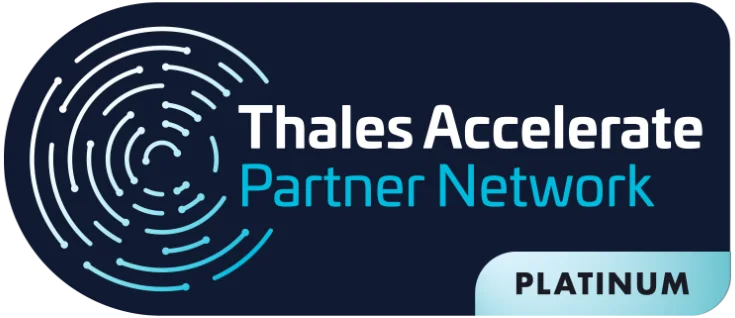In a world where technological innovation has become the norm, Blockchain technology stands out as a disruptive force with the potential to redefine our notions of transactions and information exchange. Concepts such as blockchain security and P2P transactions have become part of the business context.
This revolutionary technology, which emerged at the advent of cryptocurrencies, is now proving capable of transforming much more than the financial sector. It opens the way for the reinvention of many other sectors of the global economy.
This article aims to unravel the inner workings of this promising technology, its operation, practical implications, and the benefits beyond Blockchain security that it offers.
Join us on this journey of exploring the transformative power of Blockchain.
Blockchain Technology Goes Beyond Cryptocurrencies
Blockchain is most often associated with the cryptocurrency Bitcoin, however, its essence goes further, serving as a set of distributed records that monitor transactional data in a secure, verifiable, and durable manner.
The big revolution lies in the fact that these records do not require a central authority for validation.
Instead, trust is established and maintained through a consensus system in a peer-to-peer (P2P) network. This is one of the main practical applications of Blockchain technology.
This principle of decentralization has profound implications, with the potential to redefine the future of sectors such as banking, as well as impacting various other areas of society and the economy.
This is the impact of decentralization and its impact on the banking industry.
The mechanics of the revolution: how Blockchain works
Let’s dig a little deeper into the concept of technology.
In simpler terms, Blockchain can be understood as a distributed ledger of records, kept permanently and inviolable by transactional data.
This logbook works as a decentralized database, managed by computers belonging to a P2P network.
Each of the computers in the distributed network maintains a copy of the logbook to avoid a single point of failure, and all copies are updated and validated simultaneously.
Today, Blockchain applications are being explored in many industries as a secure and cost-effective way to create and manage a distributed database and keep records of digital P2P transactions of all kinds.
The Blockchain architecture involves two types of records: individual transactions and blocks
The first block contains a header and data pertaining to the P2P transactions that take place in a defined period. The date and time are used to create an alphanumeric string called a hash.
In addition, each subsequent block uses the previous hash to calculate its own hash.
Before a new block can be added to the chain, its authenticity is verified by a computational process called validation or consensus.
Most nodes in the network must agree that the hash of the new block has been calculated correctly, ensuring that all copies of the distributed record share the same state.
Once added, a block can be referenced in subsequent blocks, but cannot be changed
If someone tries to change a block, the hashes of previous and subsequent blocks will also be changed, interrupting the current shared state.
If consensus is no longer possible, the network will be aware that a problem has occurred and no new blocks will be added to the chain until the problem is resolved.
In practice, Blockchain technology uses cryptography and digital signatures to prove identity, authenticity, and enforce read and write access rights.
The technology contains mechanisms to enforce immutability, making it impossible to alter historical records. Blockchain P2P Blockchain P2P transactions are autonomous based on shared ownership and equality among participants.
P2P transactions through Blockchain do not require the help of an intermediary, reducing the cost of each transaction.
Safety is priority
In terms of security, the algorithms used to validate the accuracy of the distributed ledger make Blockchain much less vulnerable to fraud and cybercrime than conventional protection systems.
Moreover, it is almost impossible to corrupt a Blockchain, as the records in formation are shared and continuously reconciled by thousands, even millions of computers.
Blockchain also has no single point of failure, so if one node goes down, there is no problem because all the other nodes have a copy of the records.
Blockchain’s autonomy should promote other emerging aspects of the economy. The machines will be able to use the technology to become autonomous participants in other market segments.
Benefits Beyond Security: The Unlimited Potential of Blockchain
Blockchain technology has received a lot of attention for its potential to revolutionize various industries. But its capabilities go far beyond the well-recognized security benefits.
As we move into an increasingly digital future, it is crucial to recognize and appreciate the comprehensive potential of Blockchain.
The concept and use of the technology may seem complex, but it is quite practical. By employing cryptography and digital signatures, Blockchain security verifies identity, guarantees authenticity, and enforces access rights.
In essence, it is a self-sustaining system based on shared ownership and equality among participants. P2P transactions through Blockchain do not require an intermediary, effectively reducing the cost of each transaction.
In addition, the algorithms used to validate the distributed registry make the technology highly resistant to fraud and cybercrime, compared to conventional protection systems.
These inherent safeguards contribute to the robustness of Blockchain, but the advantages of this technology go further.
As we have seen in the course of the article, one of the most significant benefits is its almost invulnerability to corruption.
Since the records in formation are shared and continuously reconciled by thousands, even millions of computers, it is almost impossible to compromise their architecture.
There is no single point of failure
Blockchain’s autonomy also promises to foster other emerging aspects of the economy.
In this scenario, machines will use technology to become autonomous participants in different market segments.
In conclusion, while the benefits of Blockchain security are profound, its potential goes beyond that.
From reducing transaction costs and improving data integrity to enabling machine autonomy, Blockchain has a very broad potential to shape our digital future.
As we continue to explore and understand this technology, we may find ourselves on the verge of a new era, driven by technology and all its potential.
About Eval
With a track record of leadership and innovation dating back to 2004, Eval not only keeps up with technological trends, but we are also in an incessant quest to bring news by offering solutions and services that make a difference to people’s lives.
With recognized value by the market, Eval’s solutions and services meet the highest regulatory standards of public and private organizations, such as SBIS, ITI, PCI DSS, and LGPD (General Law of Data Protection). In practice, we promote information security and compliance, increase companies’ operational efficiency, and reduce costs.
Innovate now, lead always: get to know Eval’s solutions and services and take your company to the next level.
Eval, safety is value.
Written by Arnaldo Miranda, Evaldo. Ai, reviewed by Marcelo Tiziano and designed by Caio.










